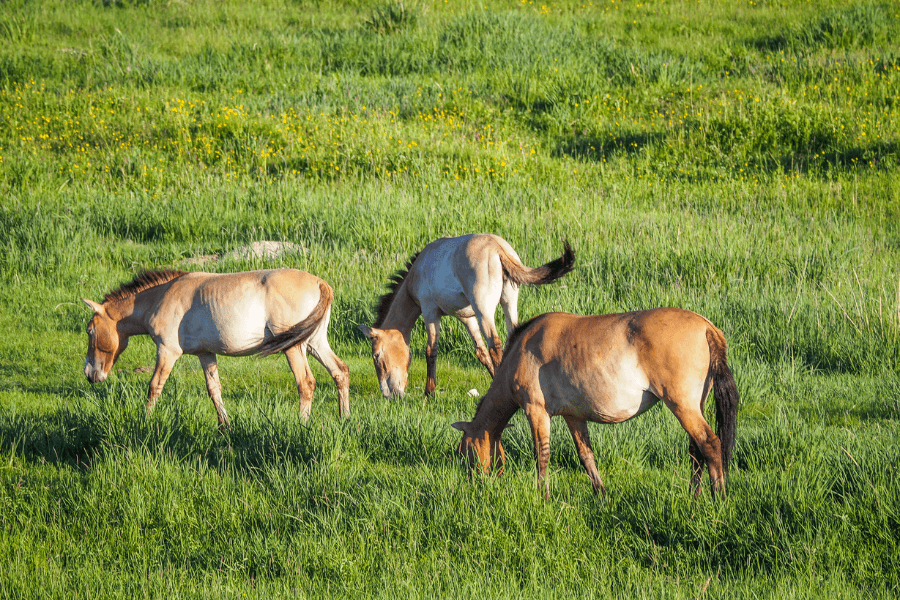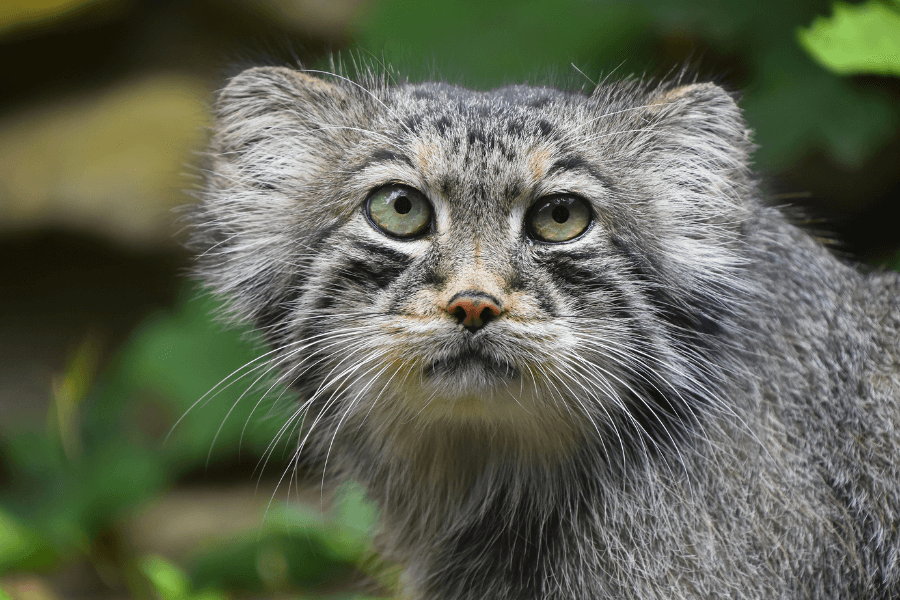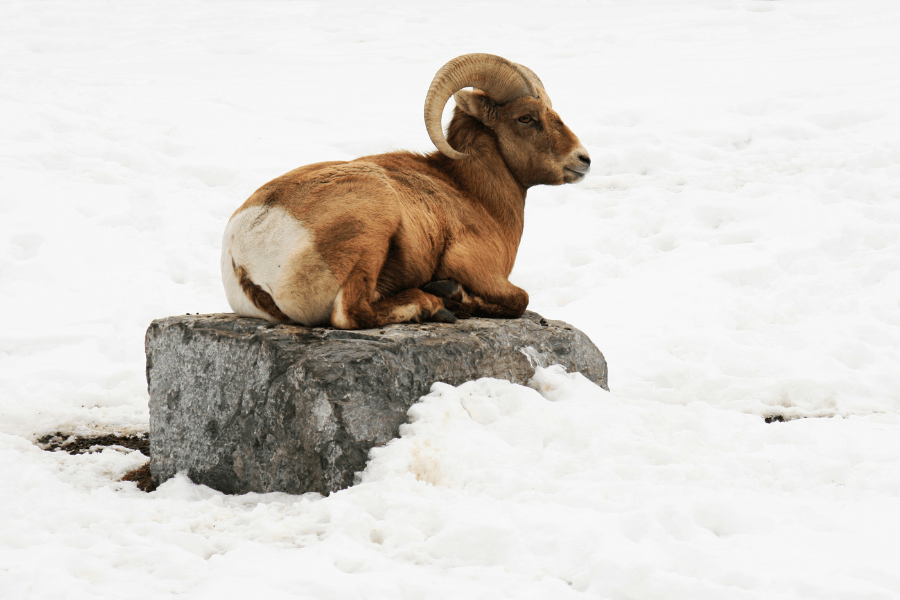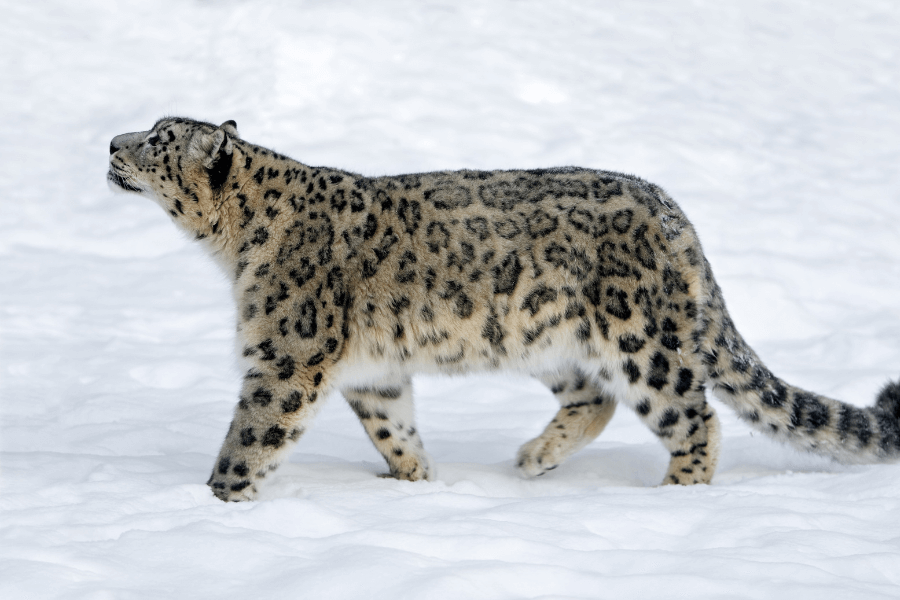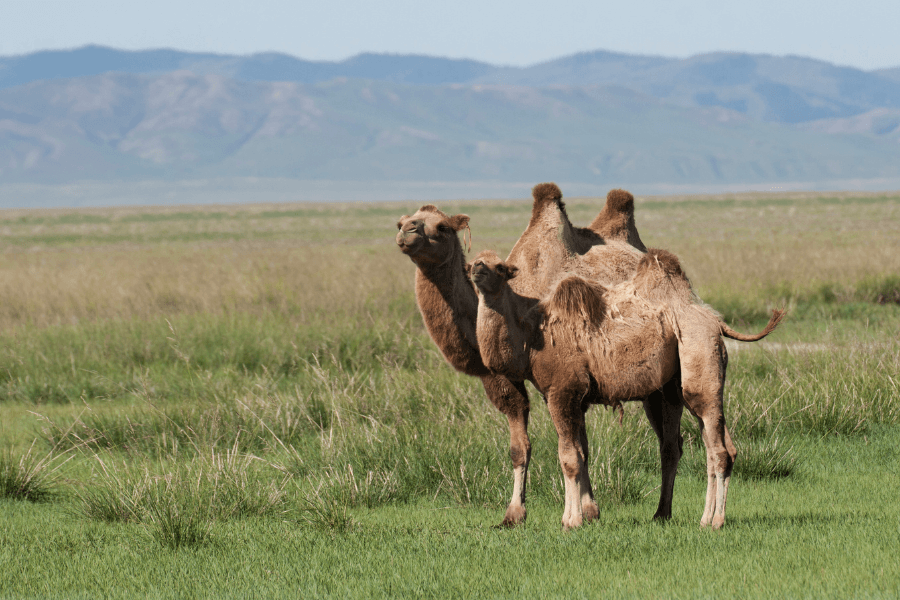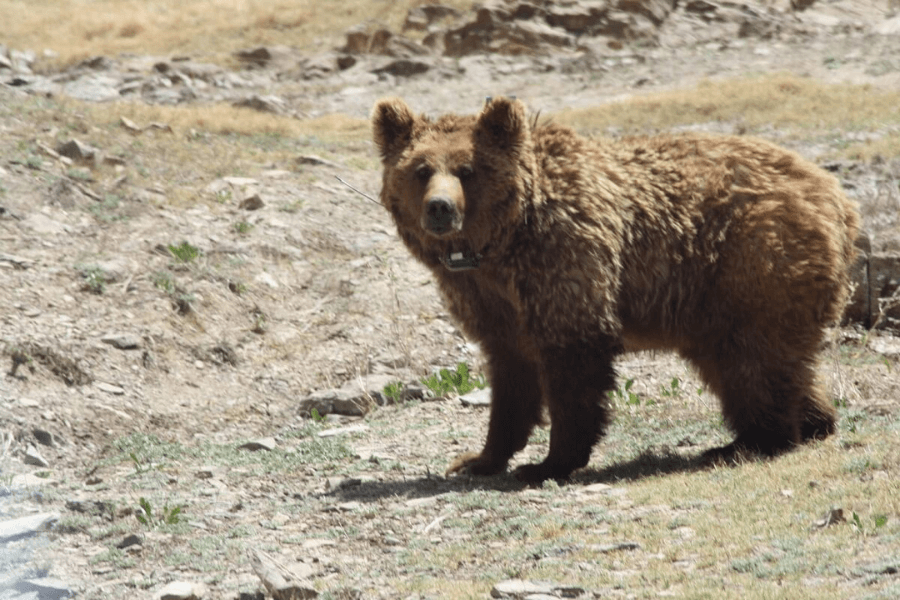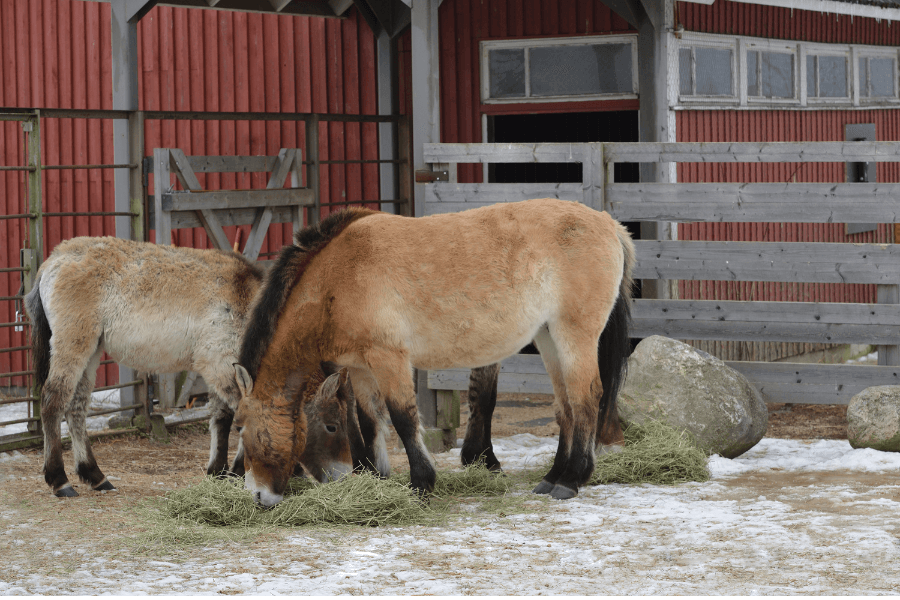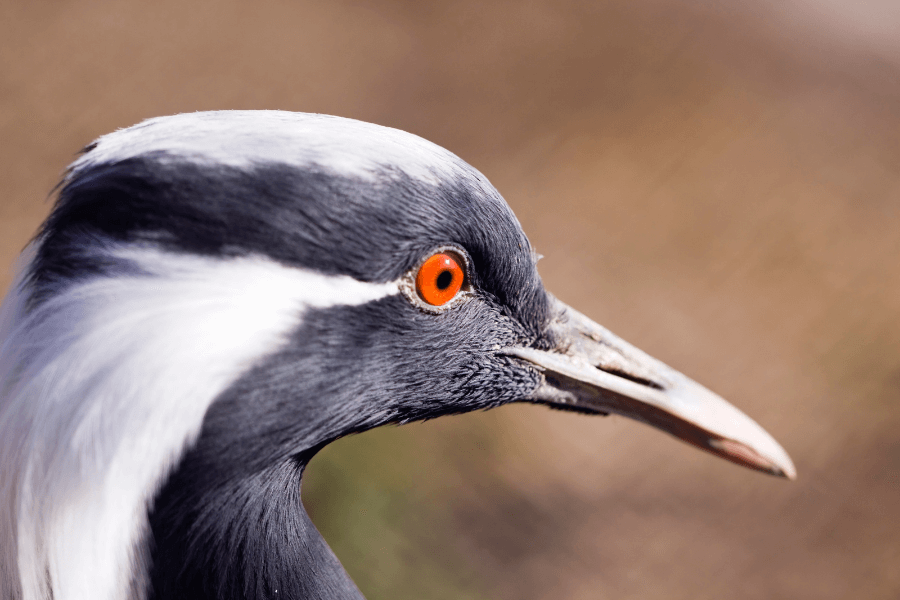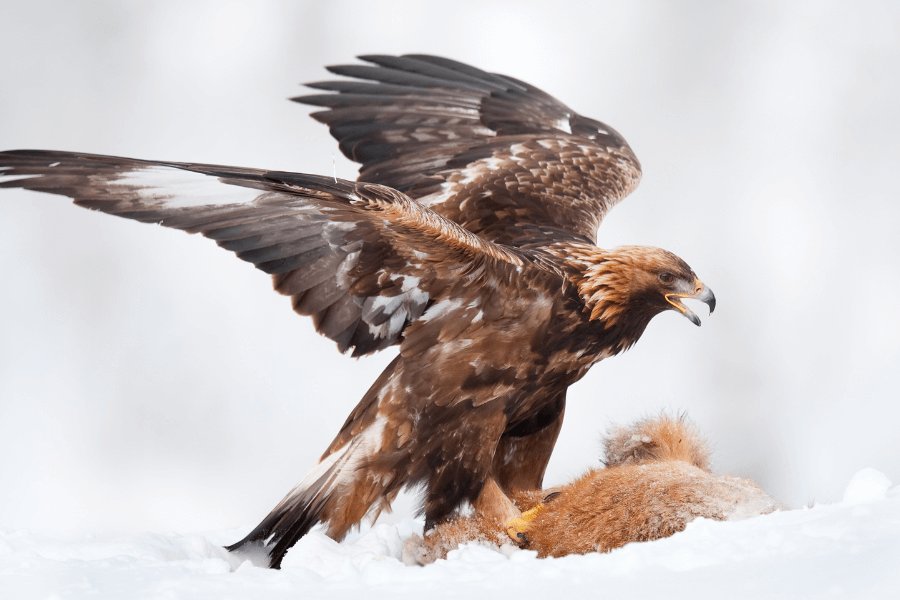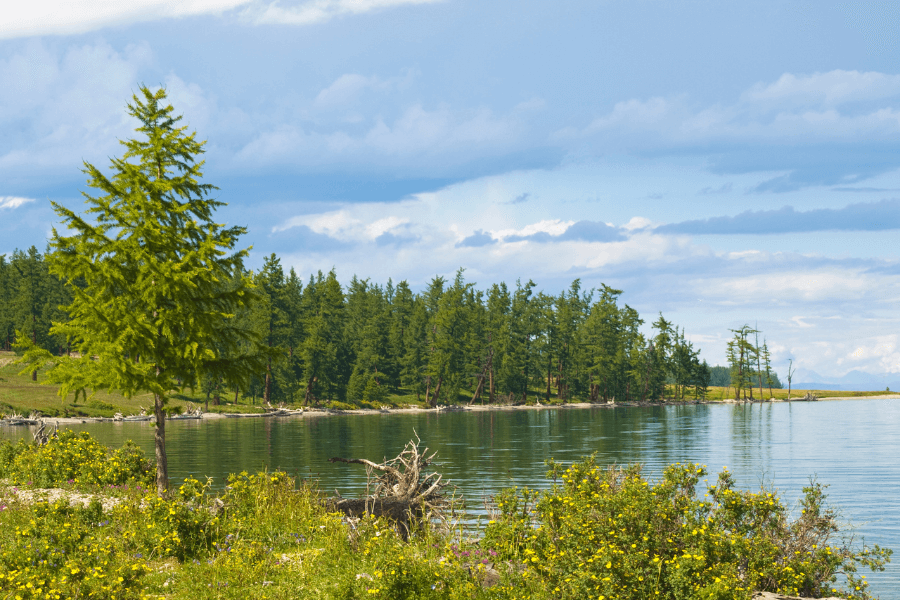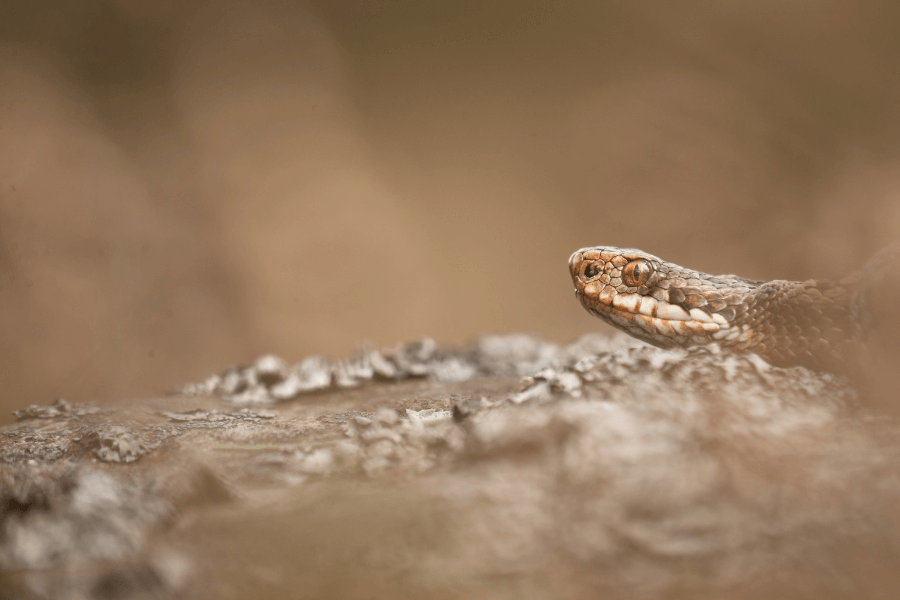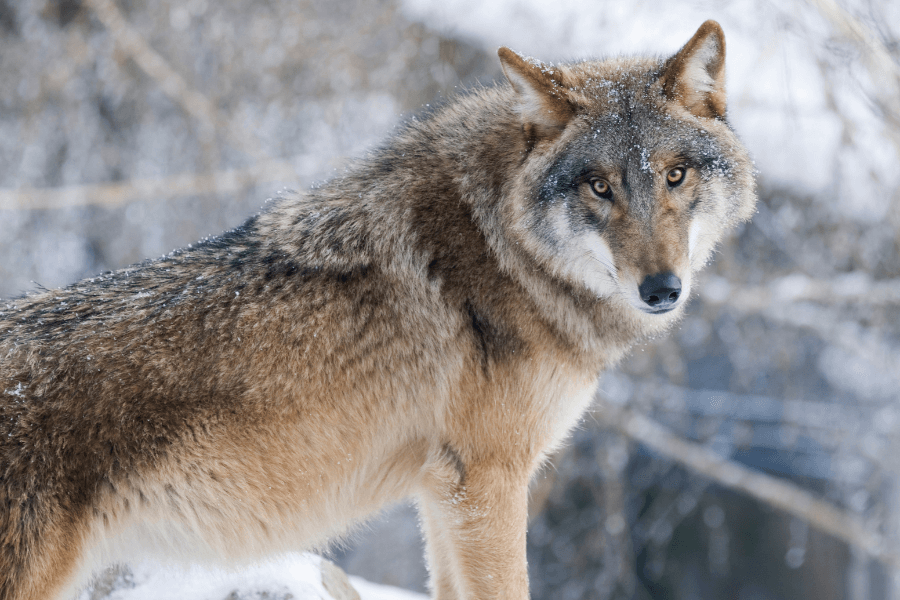Travel Guide
Mongolian Wildlife | Top 10+ Most Iconic Wild Animals of Mongolia
Mongolia, often referred to as the “Land of the Blue Sky,” is a vast and diverse country boasting a unique and captivating landscape. The animals of Mongolia, ranging from the iconic Przewalski’s horse to the majestic snow leopard, offer an unparalleled opportunity for wildlife enthusiasts to witness nature’s splendor up close. From the snow-capped peaks of the Altai Mountains to the sprawling plains of the Gobi Desert, a variety of Mongolian wildlife has adapted to thrive in these harsh yet beautiful environments. On Mongolia Tours to experience the wonders of its wildlife, from encountering the elusive snow leopard in the Altai Mountains to marveling at the wild horses of the Gobi Desert.
Animals of Mongolia: An overview
Historically, Mongolia’s forests and steppes were abundant with fur-bearing animals like marmots, muskrats, squirrels, foxes, and wolves, which were hunted extensively for their fur and other products. Additionally, animals such as deer, sable, and ermine were raised on state animal farms for fur production. The hunting of wild sheep was even organized as a tourist attraction. However, since the collapse of the Soviet Union, studies have indicated marked declines in populations of endangered species like argali sheep, bears, and Asiatic wild asses, with some estimates suggesting declines of 50 to 90 percent. Despite these challenges, little effort has been made to regulate hunting and the trade of wild animal products.
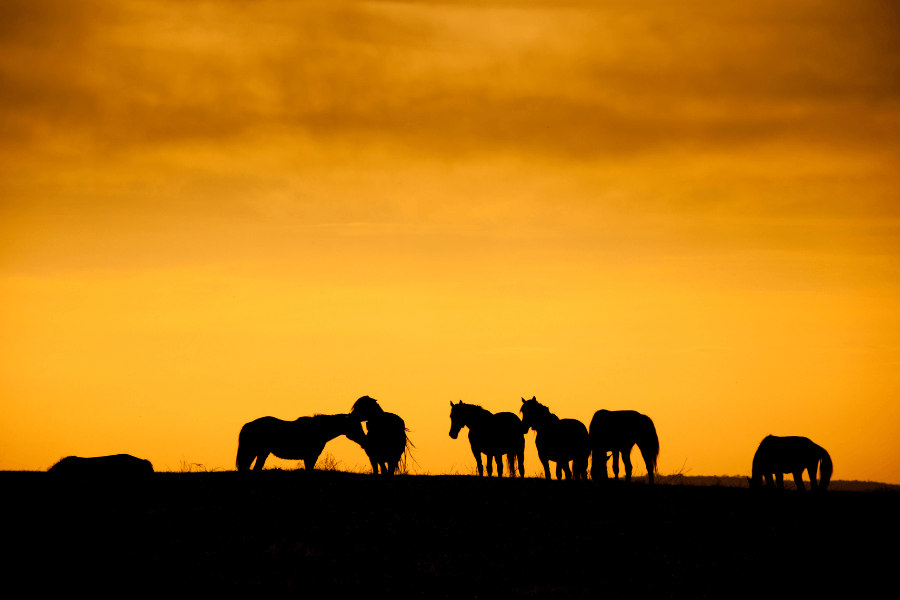
Mongolia’s diverse habitats, ranging from deserts to mountains to taiga forests, support a rich array of wildlife. The country boasts a remarkable biodiversity, with 136 species of mammals, over 400 species of birds, 76 species of fish, 8 types of amphibians, and 22 reptile species. Among these, some iconic and endangered wild Mongolian animals are particularly noteworthy.
The steppe, characterized by vast grasslands, is home to a variety of animals of Mongolia such as wolves, rabbits, and antelope herds capable of reaching speeds of up to 45 miles per hour. However, despite Mongolia’s constitutional commitment to wildlife conservation as a common resource, the populations of many species have experienced significant declines, attributed in part to unregulated hunting and wildlife trade.
The endangered wild animals of Mongolia including argali sheep, ibex, snow leopards, and wild asses are being protected by the authorities. The Gobi bear, with only a few dozen individuals left, faces an especially precarious situation. Additionally, the Pallas cat, a rare feline species, adds to the unique Mongolian wildlife roster.
Iconic Animals of Mongolia
Mongolia’s rich biodiversity is reflected in its diverse landscapes, ranging from the arid expanses of the Gobi Desert to the lush forests of the taiga. Mongolian wildlife is as diverse as its landscapes, offering a captivating glimpse into the intricate web of life that thrives in this vast and untamed wilderness.
Animals From The Lush Steppe
Takhi (Przewalski’s Horse) – The official National Animal of Mongolia
The national animal of Mongolia is the Przewalski’s horse, also known as the Mongolian horse or the Takh. Standing at just 4 feet tall, this horse is smaller than typical domestic breeds and is recognizable by the black stripe along its back. Despite its resemblance to domestic horses, the Przewalski’s horse is born to roam wild.
Symbolizing strength and endurance, the Takh is well-adapted to Mongolia’s harsh climate, withstanding extreme cold and windy conditions. In Mongolian culture, the Takh holds spiritual significance, with the name ‘Takh’ translating to ‘spirit’ or ‘holy horse.’ Legends even attribute Genghis Khan as having ridden a Takh during his conquests.
Once considered extinct due to hunting and habitat loss, conservation efforts, including breeding programs, have helped the Przewalski’s horse make a comeback. While their population remains endangered, with only around 178 mature individuals estimated to exist today, their resilience and cultural importance continue to captivate admirers worldwide.
Pallas’s Cat
The Pallas’s cat, also known as the manul, is a captivating and elusive feline species native to the rugged landscapes of Central Asia, including Mongolia. Renowned for its unique appearance, with a stocky build, thick fur, and distinctive facial markings, this animal in Mongolia is a master of camouflage in its rocky and arid habitats. Despite its small size, this solitary hunter is an adept predator, preying on small mammals, birds, and insects with precision and stealth.
Found primarily in remote and mountainous regions, such as the Altai and Sayan Mountains, the Pallas’s cat is well-adapted to survive in harsh environments, enduring extreme temperatures and sparse vegetation. Its secretive nature and elusive behavior make sightings of this elusive cat a rare and cherished experience for wildlife enthusiasts and researchers alike.
The Towering Altai Mountains
Kingly Argali Sheep
The Kingly Argali Sheep, native to the high mountain ranges of Mongolia, is renowned for its impressive size, majestic curved horns, and regal presence. This magnificent wild sheep, considered the largest sheep species in the world, inhabits the rugged and inaccessible terrain of the Altai, Hangai, and Khangai mountain ranges. With its thick, coarse coat adapted to withstand the harsh mountain climate, the argali roams the alpine meadows and rocky slopes in search of grasses, herbs, and shrubs for sustenance. Males, known as rams, boast massive, spiral horns that can reach lengths of up to six feet, making them a symbol of strength and dominance.
Snow Leopard
The snow leopard, a majestic and elusive big cat, inhabits the rugged and remote mountainous regions of Central and South Asia, including parts of Mongolia. Known for its strikingly beautiful fur pattern, which provides excellent camouflage in its rocky habitat, the snow leopard is a symbol of wilderness and grace. This solitary and elusive predator preys on mountain ungulates such as ibex and argali sheep, relying on its incredible agility and stealth to stalk its prey in the steep and rocky terrain.
Despite its formidable hunting skills, the snow leopard faces numerous threats, including habitat loss, poaching, and retaliatory killings by herders protecting their livestock. Conservation efforts are underway to protect this iconic species, including community-based conservation initiatives and the establishment of protected areas. However, the snow leopard remains endangered, with its population estimated to be between 4,000 and 6,500 individuals scattered across its range. Preserving the snow leopard’s habitat and ensuring coexistence with local communities are essential for the continued survival of this magnificent cat.
The Gobi Desert
Bactrian Camel
The Bactrian camel, native to the deserts and steppes of Central Asia, including Mongolia, is a remarkable creature known for its distinctive two humps and ability to thrive in extreme environments. These rugged and hardy camels are well-adapted to the harsh conditions of their habitat, where temperatures can fluctuate dramatically between scorching hot days and freezing cold nights. Their double-layered coats provide insulation against the cold, while their ability to conserve water enables them to survive long periods without drinking. Bactrian camels play a vital role in the lives of nomadic herders in Mongolia, serving as reliable method for transporting goods across vast distances of rugged terrain among many animals of Mongolia
Gobi Bear
The Gobi bear, also known as the Gobi grizzly bear or Mazaalai, is a rare and endangered species native to the Gobi Desert in Mongolia. Known for its distinctive cream-colored fur, this bear is well-adapted to the desert environment, where it inhabits rugged mountain ranges and rocky terrain. The Gobi bear primarily feeds on plants, roots, berries, and occasionally small mammals, making it an important part of the desert ecosystem. However, its population has dwindled to just a few dozen individuals, largely due to habitat loss, human encroachment, and poaching.
Mongolian Wild Ass
The Mongolian wild ass, a subspecies of the onager, is a resilient inhabitant of the harsh Gobi Desert, once roaming across eastern Kazakhstan and southern Siberia before facing extinction due to hunting. This herbivore thrives on the sparse vegetation of the desert, including thin grasses, shrubs, and trees. Living in a nomadic pattern, these creatures traverse vast distances in search of food and water, covering up to 70,000 square kilometers annually.
Remarkably adapted to their environment, they dig holes at dry riverbeds and water sources to access subsurface water during scorching summers. These watering holes also serve as crucial resources for other species and humans alike. Despite being classified as near-threatened by the IUCN, with an estimated population of 23,000 mature individuals in the Mongolian Gobi and 5,000 in Northern China, the Mongolian wild ass continues to symbolize resilience in the face of adversity.
Birds of Mongolia Animals
Demoiselle Crane:
The Demoiselle Crane, a symbol of elegance and grace of Mongolian wildlife, enchants observers with its intricate dance displays and elongated legs and necks. These migratory birds undertake awe-inspiring journeys between Mongolia and their breeding grounds in China, spanning vast distances with remarkable precision. Their migration not only showcases the wonders of nature but also contributes to the ecological balance of both regions, enriching ecosystems with their presence.
Golden Eagle
The Golden Eagle, a majestic inhabitant of Mongolia’s rugged peaks, reigns supreme in the skies with its impressive wingspan and acute eyesight. Hovering high above, it scans the terrain below with precision, hunting for prey and playing a vital role in maintaining the delicate balance of the mountain ecosystem. As an apex predator, the Golden Eagle exemplifies the intricate dynamics of Mongolian wildlife, underscoring the importance of preserving its natural habitats and biodiversity.
Houbara Bustard:
The Houbara Bustard, a magnificent yet threatened species among animals of mongolia, finds refuge in the grasslands of Mongolia. Its sandy-colored feathers provide perfect camouflage against the grassy backdrop, making it a challenge to spot. The quest to observe these elusive birds requires patience and keen observation skills, rewarding those who persevere with glimpses of their remarkable adaptations. As stewards of Mongolia’s grasslands, the Houbara Bustard serves as a symbol of the delicate balance between wildlife conservation and human development in the region.
Discovering Birdwatching Hotspots
The Khovd River Valley:
In the western part of Mongolia, the Khovd River Valley is a paradise for birdwatchers. When you explore this picturesque valley, keep your binoculars ready to spot a variety of bird species. Look out for migratory birds like Demoiselle cranes, known for their elegant dances, as they make their way through the valley. You may also catch sight of raptors, including golden eagles soaring high above the landscape. Along the riverbanks, keep an eye out for waterfowl such as ducks and geese, adding to the vibrant birdlife of the Khovd River Valley.
Lake Hovsgol:
Located in the northern region of Mongolia, Lake Hovsgol attracts a diverse range of bird species. The tranquil shores of this beautiful lake and marvel at the rich birdlife it supports. Besides, the black stork wading in the shallows, while bar-headed geese and various species of ducks paddle serenely across the crystal-clear waters.
Khustai National Park:
Just a short drive from Mongolia’s capital city, Ulaanbaatar, Khustai National Park is renowned for its population of wild horses, known as Takhi or Przewalski’s Horses. However, this protected area is also a fantastic spot for birdwatching. Listen for the songs of songbirds echoing through the forested valleys, and watch for birds of prey soaring overhead.
Most dangerous Animals in Mongolia
Mongolia’s rugged terrain and extreme weather conditions have given rise to some of the world’s most dangerous animals, presenting risks to both locals and visitors alike. These are some of the most dangerous animals of Mongolia.
Common Adder
One of the venomous animals of Mongolia is the Common Adder, one of four venomous snake species in the country. While not inherently aggressive, these snakes will bite when provoked, often leading to painful injuries requiring medical attention. Despite their venomous nature, fatalities from Common Adder bites have been rare, with only a handful recorded since 1876.
Halys Pit Viper
Another venomous serpent, the Halys Pit Viper, poses a similar risk to unsuspecting individuals venturing into its habitat. Although the extent of human encounters with this viper remains unclear, its bite can result in severe swelling, bruising, and blistering, necessitating medical treatment to mitigate its effects.
Mongolian Death Worm
Legend and lore shroud the Mongolian Death Worm, a mythical creature rumored to inhabit the depths of the Gobi Desert. Tales of its venomous spray and deadly skin have captured imaginations for generations, although skepticism persists among scientists, who suggest sightings may be attributed to other species such as the Tartar sand boa constrictor.
Mongolian Wolf
Among the terrestrial predators, the Mongolian Wolf stands out as a formidable threat, with its large size and territorial instincts. While typically avoiding human contact, encounters with these wolves can turn perilous if they perceive a threat to their territory or offspring.
How To See Wild Animals of Mongolia
Be Prepared
Firstly, equip yourself with essential items such as binoculars, a camera with a telephoto lens, and appropriate clothing for the often-changing weather conditions, including sturdy hiking boots and layers for warmth. Additionally, consider bringing a field guide to identify the Mongolia wildlife that you may encounter.
Respect Wildlife and Their Habitat
Respecting Mongolian wildlife and their habitats is paramount. Maintain a respectful distance from animals to avoid causing stress or disturbance, and always follow local guidelines and regulations. Avoid making loud noises or sudden movements that could startle the animals, as this may disrupt their natural behaviors and lead to missed opportunities for observation.
Find the Perfect Time
Timing is crucial for Mongolian wildlife viewing. Early mornings and late afternoons are prime times as animals are typically most active during these periods, engaging in feeding, hunting, or socializing. Plan your outings accordingly, allowing ample time to reach your desired location and settle in before dawn or dusk.
Patience is Key
Nature can be unpredictable, and animals may not always appear on cue. Be prepared to wait quietly and observe your surroundings attentively, as even the slightest movement or sound could reveal the presence of elusive wildlife. Embrace the experience of being immersed in nature, and cherish the moments when you encounter Mongolia wildlife in its natural habitat.
Whether observing the majestic Przewalski’s horse in the vast steppe, marveling at the graceful movements of Demoiselle Cranes in flight, or patiently waiting for a glimpse of the elusive Snow Leopard in the mountainous terrain, each encounter with Mongolian wildlife is a testament to the country’s natural heritage. By embracing responsible wildlife viewing practices, travelers can forge meaningful connections with the wild while contributing to the conservation efforts aimed at preserving Mongolia’s rich biodiversity for generations to come.


